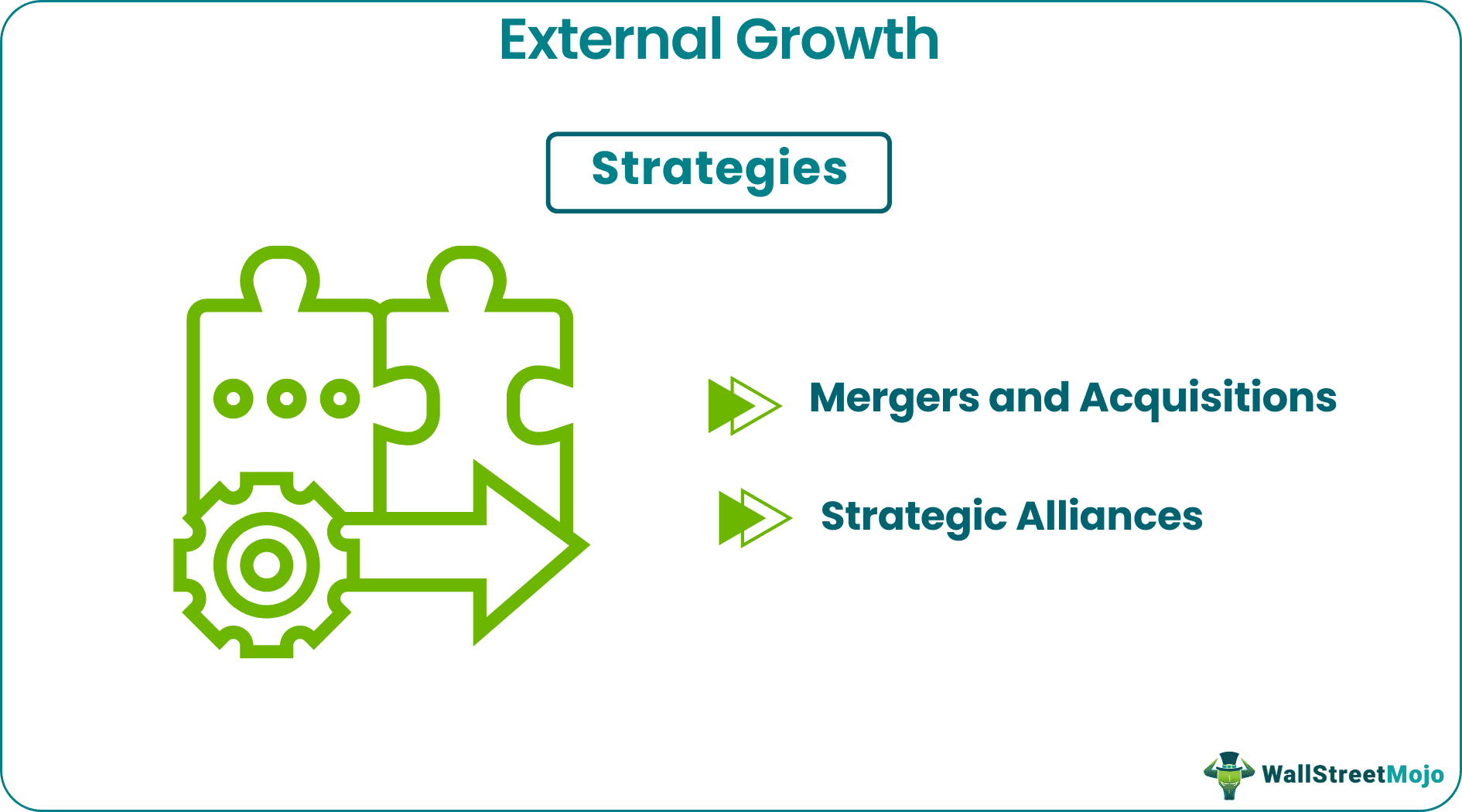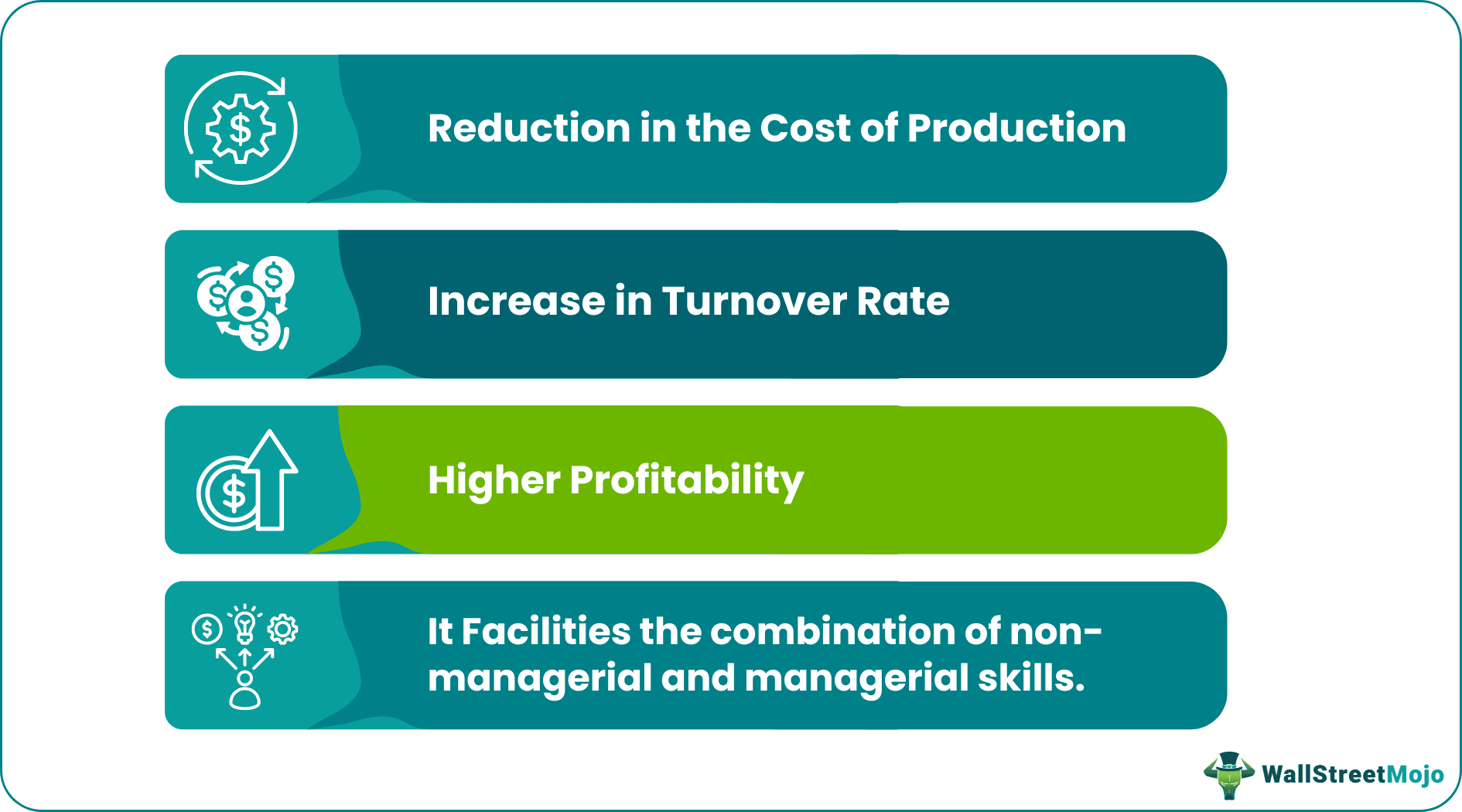Table Of Contents
External Growth Definition
External Growth refers to the inorganic growth strategy wherein a company uses external resources and capabilities, but not the available internal resources, to expand its business activities. This strategy results in an increase in sales and profitability through purchasing other companies or building a business relationship with them.
Strategies of External Growth
The strategies can be broadly classified into two primary vehicles: mergers & acquisitions and strategic alliances. The differentiating factor between the two strategies is how the ownership changes. In mergers & acquisitions, the ownership between the companies gets exchanged, while in a strategic alliance, businesses can retain their independence while pursuing their collective objectives.

- Mergers and Acquisitions: Typically, the companies exchange their ownership in a merger and acquisition transaction. A merger refers to a transaction wherein two companies combine to form a new entity with the consent of the boards of both the involved companies. On the other hand, an acquisition refers to a transaction wherein the acquiring company bids to purchase a controlling stake in the target company, either with the approval of the board and shareholders of the target company or without it.
- Strategic Alliances: A strategic alliance is slightly different from mergers & acquisitions as it doesn't involve a complete exchange of ownership between the companies involved. Rather, the participating companies pool their resources and assets to achieve collective goals while retaining their independence under this transaction. A strategic alliance can either be an equity alliance or a non-equity alliance.
Business
There are several reasons that businesses opt for external growth, and some of the major ones that drive this strategy are as follows:

- Limited resources constrain the growth of smaller businesses, and in such a scenario, the external growth strategy fits in perfectly.
- This strategy results in a reduction in the cost of production, an increase in turnover rate, and higher profitability.
- With the increase in size, the firms can control a larger share of resources, which results in better bargaining power.
- This strategy also facilitates a combination of non-managerial and managerial skills of different firms into one, which results in higher performance standards.
Uses
Some of the primary uses of this strategy are as follows:
- It allows companies to access newer and bigger markets.
- It helps companies to grow bog so that they can command more market power.
- At times companies acquire another company to obtain access to noble technology or a stronger brand.
- It facilitates product and service diversification.
- It helps in increasing the operational efficiency of a business.
External Growth vs. Internal Growth
- In internal growth, in-house resources are used to grow operations, which can finance either internally or from the debt and equity market. On the other hand, a company engages in merger and acquisition deals to grow in external growth.
- Internal growth focuses on improving the existing operational efficiency and cost efficiencies. On the other hand, external growth emphasizes branding, marketing, advertising, etc.
- Implementation of an internal growth strategy takes a longer period to yield results, while external growth is a relatively faster approach.
- An internal growth strategy involves lower risk than an external growth strategy, given that the latter is more expensive.
Advantages
Some of the advantages are as follows:
- It helps eliminate inefficient expenses while promoting more cooperation among the participating companies.
- It enables better utilization of resources that can increase profitability.
- It helps penetrate new markets, acquire more customers, and product diversification.
- It offers the benefits of synergy, which means that the collective output of the participating companies is more than what each company can produce
- Increase in size results in economies of scale.
Disadvantages
Some of the disadvantages are as follows:
- This strategy is quite expensive as compared to the internal growth strategy.
- It results in a concentration of power in the hands of the few who may end up misusing it.
- Merger and acquisition deals result in large-sized companies that may resort to monopoly.
- The alliance may end up in a big failure if there is a vast difference in the combined companies' level of competency and ability.
